 W
WA model aircraft is a small unmanned aircraft or, in the case of a scale model, a replica of an existing or imaginary aircraft. Model aircraft are divided into two basic groups: flying and non-flying. Non-flying models are also termed static, display, or shelf models.
 W
WThe 1:200 scale is a modeling scale used in the model building hobby. A vehicle or building made in the 1:200 scale, fits 200 times inside its real-life counterpart.
 W
WThe 1:600 scale is a modeling scale. Real vehicles are 600 times larger than their 1:600 toy or collectible model counterparts.
 W
WThe Academy of Model Aeronautics (AMA), based in Muncie, Indiana, USA at 40°10′36.25″N 85°19′32.19″W, is a non-profit organization dedicated to the promotion of model aviation as a recognized sport as well as a recreational activity. It is the largest organization of its kind with a current membership of approximately 195,000 members, with nearly 57,000 of these being youth members under 19 years of age.
 W
WGordon Burford was an Australian model aircraft engine designer and manufacturer. He was Australia's premier model engine builder. He produced thousands of engines of many different designs including the GeeBee, Sabre, GloChief and Taipan brands. Gordon was also a respected aeromodeler starting with Free Flight at a young age prior to World War II before pioneering in Control line after the war.
 W
WControl line is a simple and light way of controlling a flying model aircraft. The aircraft is connected to the operator by a pair of lines, attached to a handle, that work the elevator of the model. This allows the model to be controlled in the pitch axis. It is constrained to fly on the surface of a hemisphere by the control lines.
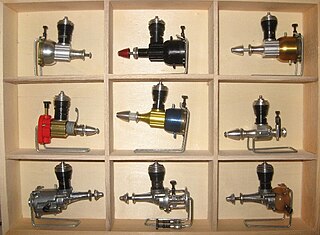 W
WCox model engines are used to power small model airplanes, model cars and model boats. They were in production for more than 60 years between 1945 and 2006. The business is named for founder Leroy (Roy) M. Cox. He started L.M. Cox Manufacturing Co. Inc, which later became Cox Hobbies Inc., then Cox Products, before being sold to Estes Industries, when it became Cox Models. On February 7, 2009, Estes Industries stopped producing Cox engines and sold all of their remaining inventory – mainly spare parts – to several private buyers from Canada and the US. One of the new owners of the remaining Cox engine and parts inventory has launched a website with an online store.
 W
WFree flight is the segment of model aviation involving aircraft with no active external control after launch. Free Flight is the original form of hobby aeromodeling, with the competitive objective being to build and launch a self controlling aircraft that will consistently achieve the longest flight duration over multiple competition rounds, within various class parameters.
 W
WFrog was a well-known British brand of flying model aircraft and scale model construction kits from the 1930s to the 1970s. The company's first model, an Interceptor Mk. 4, was launched in 1932, followed in 1936 by a range of 1:72 scale model aircraft kits made from cellulose acetate, which were the world's first.
 W
WA glow plug engine, or glow engine, is a type of small internal combustion engine typically used in model aircraft, model cars and similar applications. The ignition is accomplished by a combination of heating from compression, heating from a glow plug and the catalytic effect of the platinum within the glow plug on the methanol within the fuel.
 W
WPaul K. Guillow, Inc., commonly known as Guillow's, is an American manufacturer of balsa wood model aircraft kits.
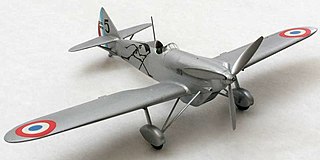 W
WHeller is a French brand of plastic scale model kits of aircraft, tanks, cars, and ships.
 W
WHerpa Wings are die-cast model airplanes trademarked under Herpa of Germany. The collection includes 250 airlines under 17 different aircraft manufacturers in 1:200 scale. The mainstay of Herpa Wings is in the 1:500 scale, while model airliners are also produced in the 1:400, 1:200, 1:1000, and 1:160 scales. Herpa Wings model airliners may also be used in conjunction with Herpa's SCENIX series, which includes model diorama airports and airport accessories.
 W
WThe Model Aeronautical Association of Australia Inc (MAAA) is an organisation recognised by CASA as a Recreational Aviation Administration Organisation. MAAA has no regulatory authority conferred to it by the CASA, however is required under a Deed of Agreement with CASA as an RAAO, to carry out certain functions on behalf of CASA paid from the public purse. It is affiliated to the Fédération Aéronautique Internationale through the Australian Sport Aviation Confederation. Founded in 1947, the MAAA presently has over 10,000 members down from a high of 12,000 in 2012 and total assets including flying fields, land and equipment worth more than $4 million AUD.
 W
WThe Model Aeronautics Association of Canada (MAAC) is the official organization for all forms of the aeromodelling hobby, for model aircraft hobbyists living in Canada. Based in Burlington, Ontario, it was founded in 1949, and presently has over 13,000 members. MAAC is responsible for instituting official policies and regulations and guidelines. This includes radio frequencies, noise restrictions, and flying clubs. They organize flying events across Canada, and provide liability insurance coverage to its members.
 W
WModel Airplane News is a monthly magazine focusing upon the hobby of radio control airplanes. Model Airplane News reviews radio control aircraft from backyard flyers, to giant scale airplanes, and features how-to articles, product reviews, modeling technology, and construction projects.
 W
WThe term park flyer denotes a class of small, primarily electric powered radio controlled aircraft, so named because their size enables some of them to be operated within the confines of a large public park. The smallest park flyers are called micro planes, they are slow enough to fly within an enclosed area such as a gymnasium or a living room; while others require the open space needed for larger models due to size and/or speed. A model with low flying speed is more susceptible to wind and turbulence. Some park flyers cannot be flown in anything more than a light breeze: typically a wind speed of > 50% of the flying speed is the limit.
 W
WA radio-controlled aircraft is a small flying machine that is controlled remotely by an operator on the ground using a hand-held radio transmitter. The transmitter communicates with a receiver within the craft that sends signals to servomechanisms (servos) which move the control surfaces based on the position of joysticks on the transmitter. The control surfaces, in turn, affect the orientation of the plane.
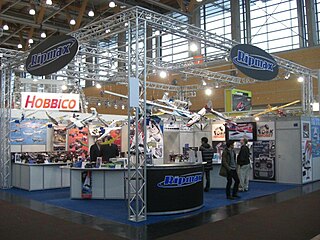 W
WRipmax Limited is a British supplier of radio-controlled models and related components, based in Enfield, Middlesex.
 W
WA scale model is most generally a physical representation of an object that maintains accurate relationships between all important aspects of the model, although absolute values of the original properties need not be preserved. This enables it to demonstrate some behavior or property of the original object without examining the original object itself. The most familiar scale models represent the physical appearance of an object in miniature, but there are many other kinds.
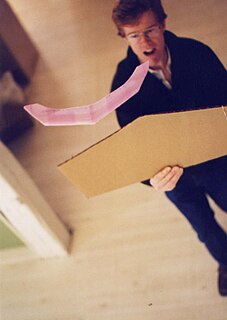 W
WA walkalong glider is a lightweight, slow flying model aircraft designed to be kept aloft by controllable slope soaring in the rising air generated by the pilot who walks along with the glider as it flies, usually holding a paddle. Hands or even the forehead can also be used to create an updraft. This type of soaring differs from other types of slope soaring in that the orographic lift is following the plane as it flies in the air and thus no other wind is required.
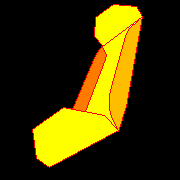 W
WA tumblewing or "tumble wing" or "tumbling wing" is a glider or kite wing design which rotates about an axis traverse to the apparent wind, not necessarily horizontal. Notice the tumble wings in massive confetti tosses; the tumbling wings become visually exciting at celebrations. Tumble wings are frequently employed in wind turbines. Tumble wings may be made of any material that supports some stiffness for form: paper, plastic, metal, composites, leaves, wood, etc. Many leaves falling from trees become tumble wing gliders. Its mode of flight is more akin to confetti than traditional fixed-wing aircraft; However, several model aircraft have been built with tumbling wings for lift (force). Tumbling wings generate lift by alternately flying and stalling as the angle of incidence changes with the spinning motion. Because it has no need for ballast, the tumblewing design has a lower wing loading and makes a good walkalong glider which is easy to make and fly. The first example of a tumblewing flown as a walkalong glider appears in the book Fantastic flight. The Big Mouth is another example of a tumblewing design which can be flown as a walkalong glider. Tumble wings are employed as the wing of kite systems, a type of rotary kite, e.g. the rotor kite of Stephen Wingert taught in patent US7621484, one of scores of such patents.
 W
WWings Across America 2008 (WAA-08) was a group of model airplane enthusiasts that flew a battery-powered radio-controlled aircraft (RC), designated as a park flyer, in all 48 contiguous United States with hopes to make all 50, if Alaska and Hawaii could be reached. A park flyer is a small radio-controlled plane typically flown in a field such as a local park or soccer field.
 W
W W
W